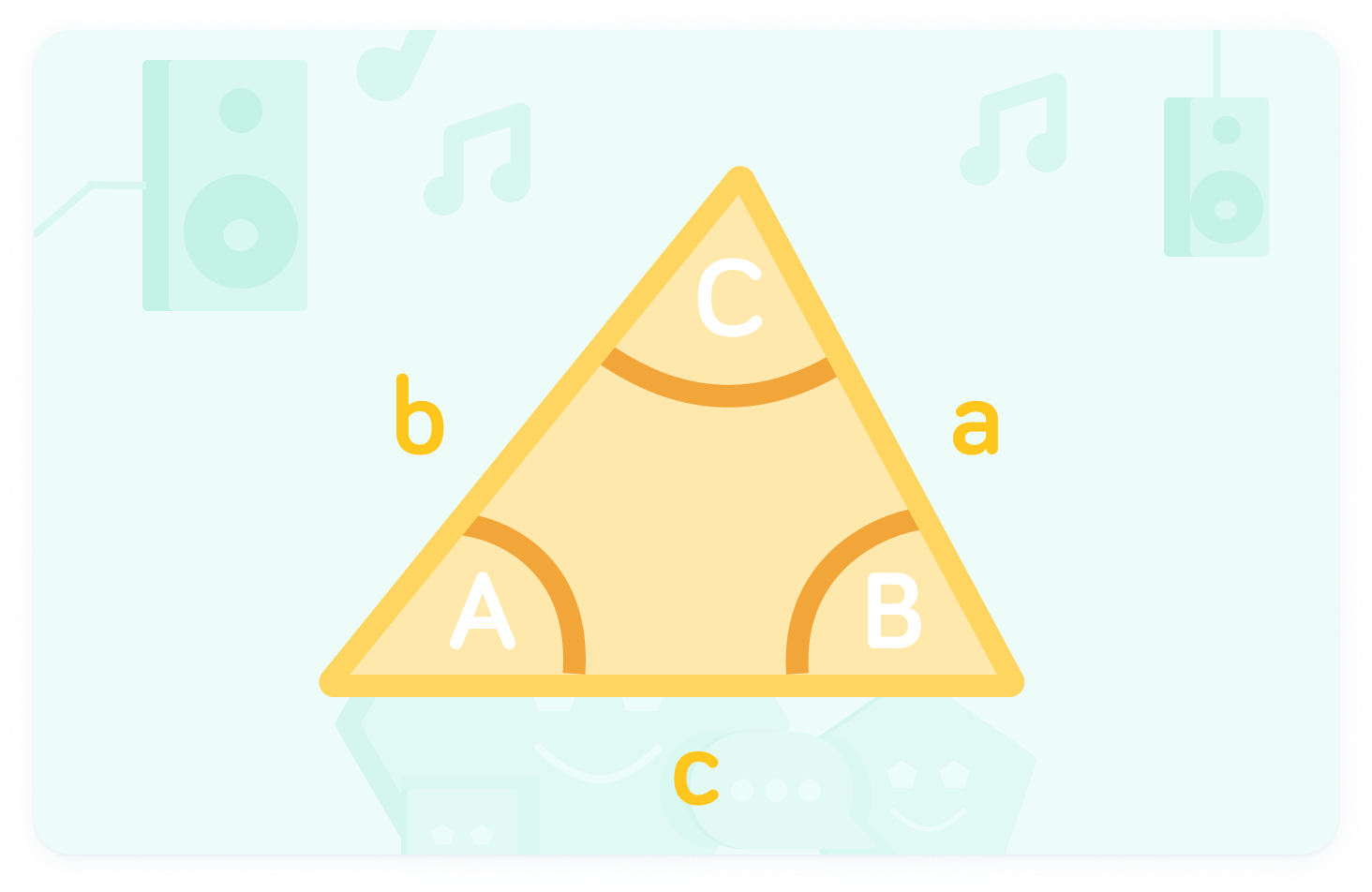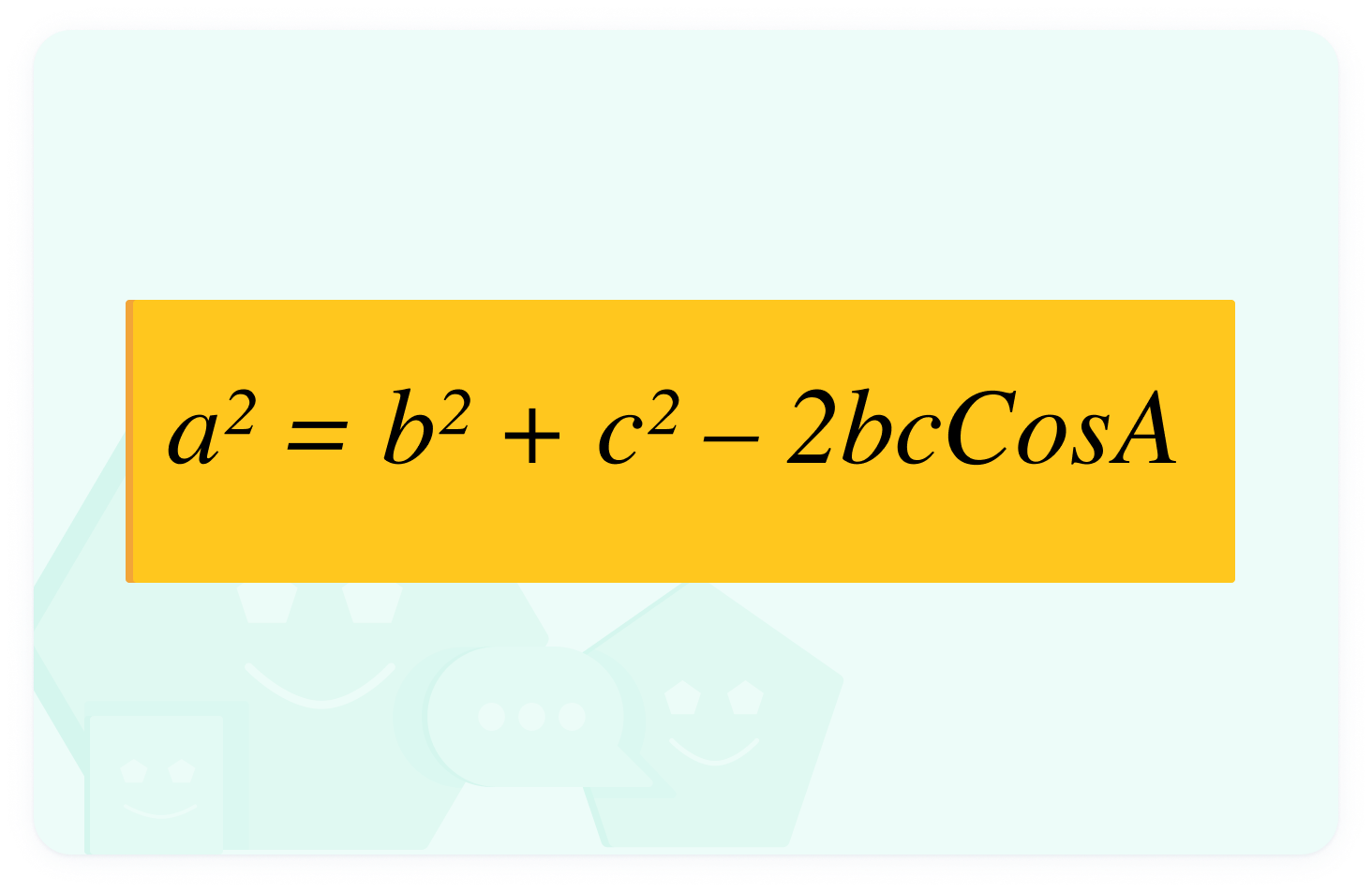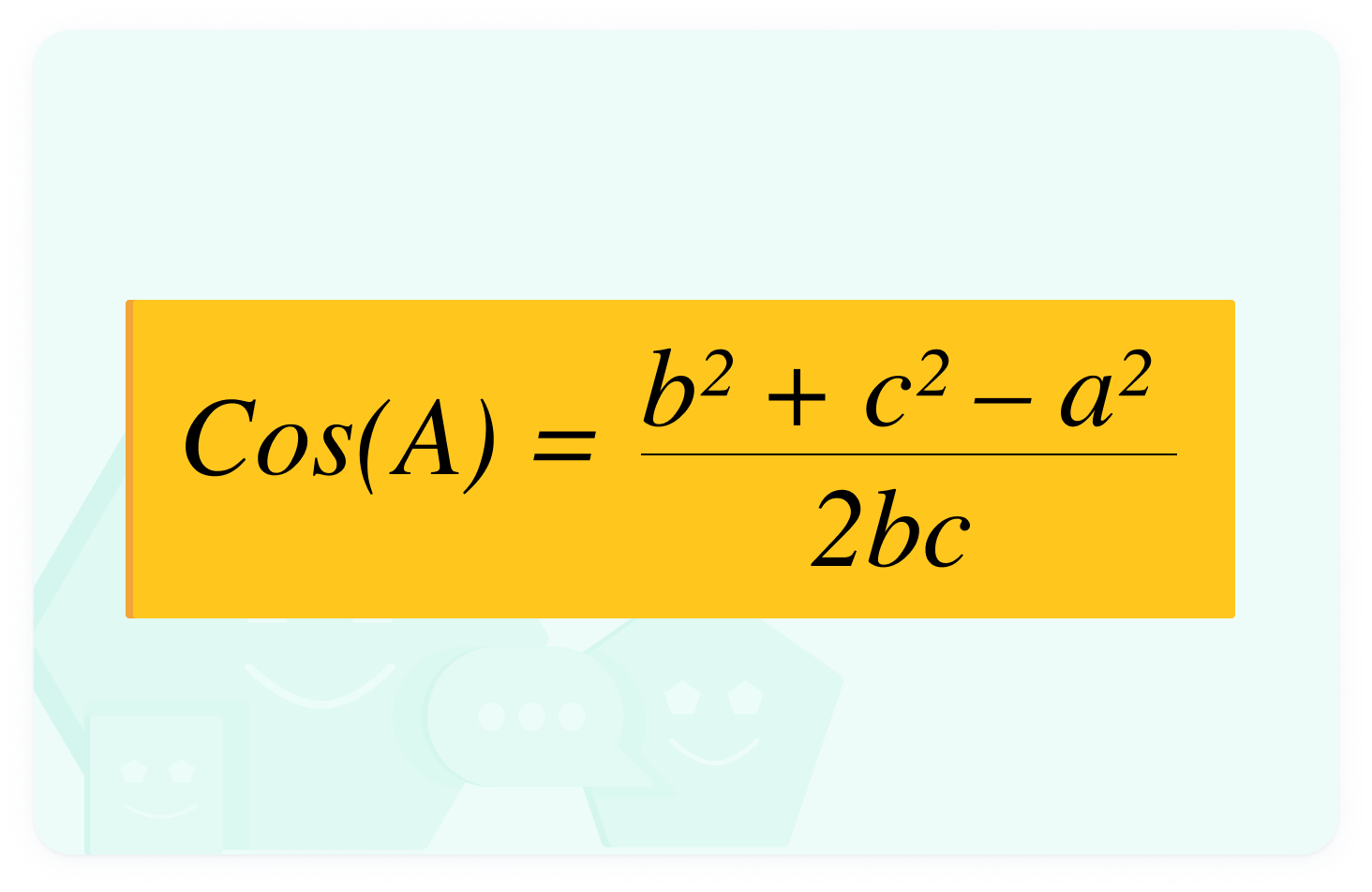YOU ARE LEARNING:
The Cosine Rule: Finding Sides

The Cosine Rule: Finding Sides
The Cosine Rule also enables us to find unknown sides in non-right-angled triangles.
Rather like the Sine Rule, the Cosine Rule is useful when you want to calculate a length or an angle in a non-right angled triangle. The difference is when to use it.
Remember the way we label a non-right angled triangle
Opposite sides and angles are labelled with the same letter, where sides are labelled in lower case and angles labelled in upper case.

For an angle A, what would we label its opposite side?

The cosine rule relates sides and angles together
To use this formula, we need to know 2 sides and the angle between them. Notice that the angle has a different letter to the sides on the right of the equation.

As with the Sine Rule, we can adjust the Cosine Rule slightly in order to find an angle.
Use this version to find an angle
In this format, cos(A) is the subject of the equation, so we do not need to rearrange in order to find the value of the angle.

You need all three sides for this to work
Make sure that you use the side opposite angle A as your side a.

